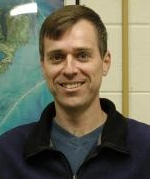William Anderson Ph.D.

Dr. Anderson has been a member of the Appalachian geology faculty since 2004 and Chair of the department since 2013. He also served the department as a temporary faculty member in 1998. In the intervening six years he taught as a tenure-track professor at Illinois State University and Radford University. He teaches courses in Physical Geology, Environmental Geology, Hydrogeology, and Advanced Environmental and Engineering Geology. The last two classes in this list are upper level courses that are primarily taken by seniors and students in the environmental geology concentration.
Dr. Anderson has three areas of research interest. One aspect focuses on aquifer recharge, including quantification with mathematical and modeling techniques and the effect of natural climate oscillations on recharge rates. This work utilizes data collected at a field site on Hatteras Island. Another aspect of his research focuses on groundwater-surface-water interactions, including the role that groundwater discharge plays in controlling stream temperatures and stream salinity. This work is being done in collaboration with Carol Babyak (Chemistry) and Chris Thaxton (Physics & Astronomy) and involves the collection of data from Boone Creek, a stream which runs through campus and downtown Boone. The third aspect of his research involves the study of groundwater flow within fractured bedrock aquifers. This work is being done in collaboration with the USGS' North Carolina Water Science Center in Raleigh and involves field sites throughout the High Country.